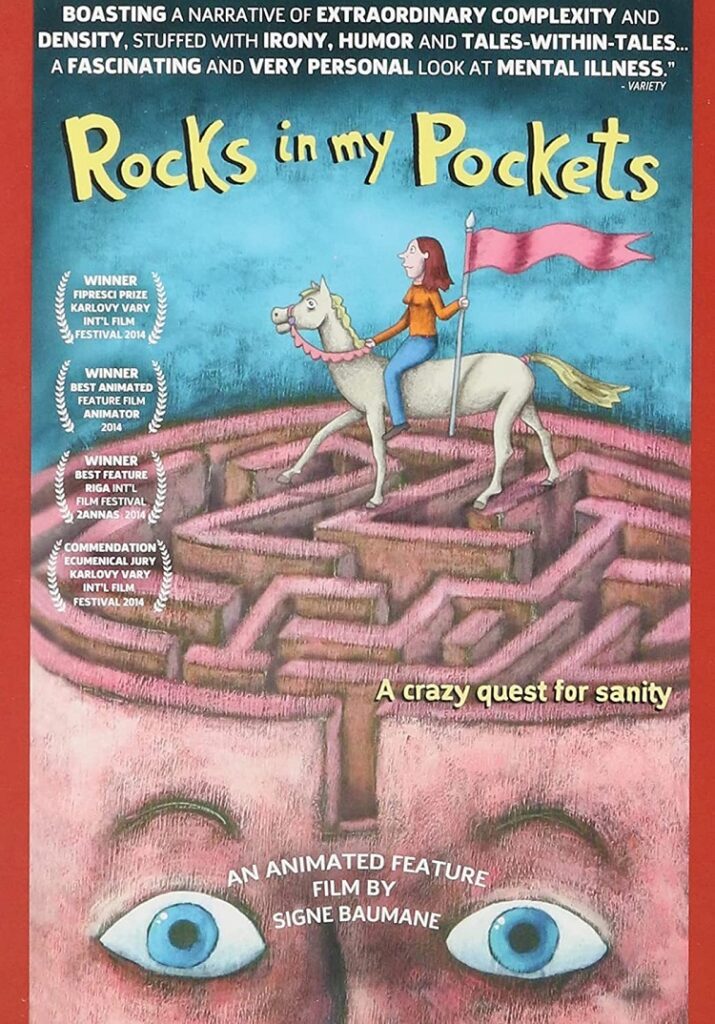
Rocks in My Pockets begins with a detailed discussion of suicide by hanging, with all angles fully explored, from how to make sure the rope doesn’t slip to how to take care of potential messes involved in the process, obviously by someone who has given it a lot of thought. This is not “cry for help catch me” talk, but “how can I make sure I end my existence” – preferably without inconveniencing anyone else too much. It’s chilling, and even off-putting – if this is where the movie starts, how dark is it going to be when it really gets going?
Death, suicide, and the horror of living life hang over every second of Signe Bauman’s animated Rock in My Pockets. In what is essentially an illustrated monologue, Signe delves back into her family history (partially fictionalized, according to a title card at the end of the film) to find out whether her grandmother really died peacefully in her sleep, or if it was an “accidental” overdose of sleeping pills. Or, as Signe implies, something more intentional.
Signe narrates every second of this mixed-media animated film, in a broadly accented voice that seems often at odds with the visuals. In fact, I would say most of the initial elements of the film are off-putting. In an animation style that is much more common for shorts than feature-length films, most of the art in Rocks involves flat 2D images that do not move too much, with very little in the realm of character animation. These 2D drawings are often incorporated into an evocatively lit 3d stop-motion backdrop. All of the visual and stylistic elements of the film require an active viewer to decipher, and on any level enjoy.
And that’s not taking into account the subject matter. A family history of hidden mental illness, Rocks in My Pockets follows a circuitous narrative that moves between stories of different female members of the family and their bouts with depression and, on several occasions, suicide. She comes from Latvia, which during the early part of her life was a Soviet state. From the harsh hand to mouth struggles of her educated grandmother having to live like a peasant, to the horrors of Soviet Mental Healthcare, none of these stories have happy endings. The disturbed members of Signe’s family are sympathized with, while the family around them is depicted as harsh, callous, braying and uncaring. It’s a claustrophobic narrative, and alienating. Signe depicts the development of insanity in various family members so vividly, with such an understanding that I almost felt defensive while watching the film. Reality felt inverted, and I felt slighted. I can’t help it that I do not see the world in the same, dark, awful way that someone with abnormal brain chemistry does.
Then, ironically, as the story becomes more specifically about the feelings of deep suicidal depression, the film seemed to turn its premise on its head. What felt like a trip deeper and deeper into a pitch black psyche does the unexpected, and comes through to the other side.
The title of the film refers to a story Signe tells at the top of the film, about her grandmother standing, fully clothed, in the middle of the river. She’s a smart woman, Signe says, so she doesn’t know why she didn’t think to fill her pockets with rocks, so she can drown more easily. In the end, Signe gets her answer, and it’s an utter surprise in a movie so leaden with suicide and madness.